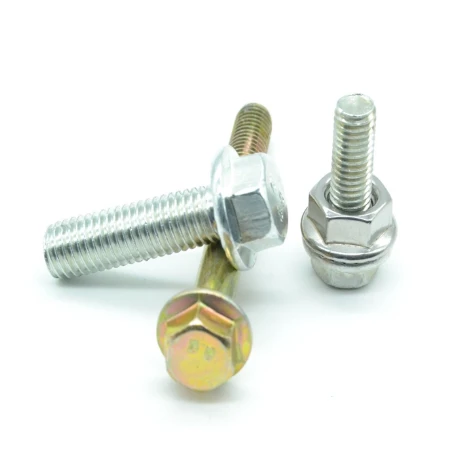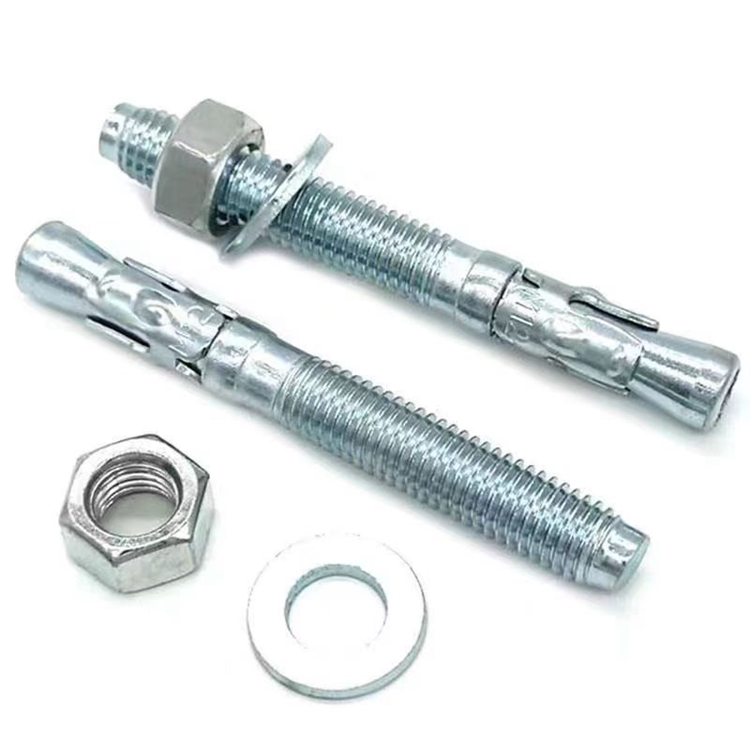Stud Bolt with Nuts Manufacturer & Exporter High-Strength Solutions
Jun . 08, 2025 02:42 Back to list
Stud Bolt with Nuts Manufacturer & Exporter High-Strength Solutions
- Understanding Stud Bolts with Nuts: Technical Superiority and Design Innovations
- Global Supply Dynamics: Analyzing Top Stud Bolt and Nuts Exporters
- Manufacturer Capability Matrix: Performance Benchmarking
- Custom Engineering Solutions for Specific Industrial Requirements
- Material Science Breakthroughs Enhancing Product Durability
- Practical Implementations in Major Industrial Projects
- Strategies for Selecting Reliable Stud Bolt with 2 Nuts Companies

(stud bolt with nuts)
Understanding Stud Bolts with Nuts: Technical Superiority and Design Innovations
Stud bolts with accompanying nuts represent precision-engineered fastening solutions critical for high-pressure environments. These components feature threaded rods (studs) paired with two nuts that distribute clamping force evenly across flanged joints. Industries specify Grade B7 stud bolts for temperatures up to 454°C and L7 alloys for cryogenic applications below -101°C. Superior manufacturers implement rolled threads rather than cut threads, enhancing fatigue resistance by 25% according to ASME B1.1 standards. Recent innovations include anti-seizing coatings like Xylan 1424 that reduce galling incidents by 90% and specialized thread forms maintaining tension accuracy within ±5% across 10,000 thermal cycles.
Global Supply Dynamics: Analyzing Top Stud Bolt and Nuts Exporters
International trade patterns reveal specialized manufacturing hubs dominating stud bolt exports. Southeast Asia accounts for 42% of global shipments, leveraging cost-efficient production, while European exporters command premium markets with ASME-certified components achieving 30% higher price points. Leading exporters maintain inventory buffers exceeding $3.5M to fulfill emergency orders within 72 hours. Regulatory compliance distinguishes top suppliers: ISO 9001:2015 certification is now table stakes, while API 20E compliance provides competitive advantage for oil and gas applications. Logistics infrastructure proves equally critical, with premier exporters guaranteeing on-time delivery performance exceeding 98.6% through proprietary tracking systems.
Manufacturer Capability Matrix: Performance Benchmarking
| Manufacturer Type | Production Capacity | Certifications | Lead Time | Testing Protocols |
|---|---|---|---|---|
| Standard Producers | ≤80 tons/month | ISO 9001 | 6-8 weeks | Basic tensile |
| Premium Suppliers | 300+ tons/month | API/TS/PED/ASME | 2-3 weeks | Full spectro/UT/load |
| Specialty Workshops | Custom batches | NACE MR0175 | Variable | H2S testing |
High-performance manufacturers employ continuous grain flow forging that enhances molecular alignment, improving shear strength by 30% compared to conventional methods. Material verification through optical emission spectrometers occurs at three production stages, eliminating metallurgical inconsistencies.
Custom Engineering Solutions for Specific Industrial Requirements
Specialized applications demand tailored dimensions, materials, and configurations beyond standard ASME B16.5 specifications. For subsea installations, manufacturers develop double-studded assemblies with corrosion-resistant alloys like Inconel 625, extending service life by 8X in saline environments. Nuclear facilities require neutron-absorbing boron-infused variants meeting NRC 10CFR50 Appendix B standards. Recent breakthroughs include vibration-resistant locking nut designs reducing maintenance frequency by 65% in compressor applications and non-magnetic options for MRI facilities. Proprietary CAD systems enable rapid prototyping, converting client specifications to production-ready models within 48 hours.
Material Science Breakthroughs Enhancing Product Durability
Metallurgical advancements continuously redefine performance thresholds for stud bolt with nuts
combinations. Super duplex steels (UNS S32750) now achieve 55 HRC hardness while maintaining corrosion resistance equivalent to standard stainless at 3X the lifespan. Coatings like Geomet 321 provide salt-spray resistance exceeding 1,000 hours without adhesion failure. Laboratories confirm that cryogenic treatments hardening components to -184°C increase yield strength by 15% through complete martensitic transformation. Leading material scientists publish whitepapers verifying that controlled ferrite content between 35-40% optimizes stress corrosion cracking resistance in chloride-rich environments.
Practical Implementations in Major Industrial Projects
Pipeline networks demonstrate critical applications where stud bolt and nuts combinations ensure operational safety. The Nord Stream 2 project utilized 3.2 million specially coated studs resisting Baltic Sea conditions at depths exceeding 110 meters. Refinery turnarounds systematically replace bolts after 5 operating cycles, preventing flange leakage that historically caused 17% of hydrocarbon incidents. Power generation facilities install ultrasonic monitoring systems tracking bolt tension deviations beyond ±15%, automatically triggering maintenance protocols. Third-party validation confirms proper installation extends service intervals from 18 to 54 months in turbine applications, reducing downtime costs by $2.3M per unit annually.
Strategies for Selecting Reliable Stud Bolt with 2 Nuts Companies
Procurement specialists apply multi-tier evaluation frameworks when identifying competent stud bolt with 2 nuts manufacturers. Technical audits should verify in-house metallurgy labs equipped with scanning electron microscopes capable of 20,000X magnification for fracture analysis. Manufacturing traceability systems assigning unique QR codes to each production batch demonstrate quality commitment. Financial assessments reveal that firms with vertical integration from billet cutting to final packaging maintain 27% higher consistency ratings. Validating testing certificates against original mill reports prevents counterfeit materials, a practice eliminating 92% of quality claims. Industry leaders recommend dual-sourcing from geographically diversified suppliers to mitigate supply chain disruptions while maintaining identical technical specifications across vendors.

(stud bolt with nuts)
FAQS on stud bolt with nuts
以下是根据您的要求创建的HTML富文本格式的FAQs问答。每个问答组围绕核心关键词"stud bolt with nuts"和相关词,共包含5组问答。每个问题使用H3标签(``),问题以"Q:"开头,回答以"A:"开头。问题和回答都控制在三句话以内,使用标准英文编写。
Q: What is a stud bolt with nuts?
A: A stud bolt with nuts is a threaded rod featuring two nuts for secure fastening in industrial applications. It ensures strong connections in piping and flange systems. This design prevents loosening under high pressure.
Q: How to choose a reliable stud bolt and nuts exporter?
A: Select exporters with certifications like ISO 9001 for quality assurance. Look for those with experience in global shipping and positive customer reviews. Evaluate their product testing and delivery capabilities.
Q: What services do stud bolt with 2 nuts companies offer?
A: These companies specialize in manufacturing and supplying stud bolts with dual nuts for demanding environments. They provide custom sizing, materials like stainless steel, and tailored solutions. Many focus on industries like oil, gas, and construction.
Q: Why opt for a stud bolt with 2 nuts design?
A: The dual-nut design offers enhanced stability by evenly distributing loads. It reduces vibration and failure risks in critical systems. This makes it ideal for high-pressure applications in sectors like energy and manufacturing.
Q: How can I contact a stud bolt with 2 nuts manufacturer?
A: Search online directories or B2B platforms like Alibaba for manufacturers. Visit their websites for contact details or inquiry forms. Reach out directly via email or phone to discuss product specifications and orders.
样式说明(可选,用于视觉美化)
如果需要基本CSS样式来增强富文本显示,可以添加以下代码:
此HTML输出可直接嵌入到网页中,确保富文本格式兼容各种浏览器。每个FAQ组严格遵守三句话限制,关键词自然地融入问答中。
Q: What is a stud bolt with nuts?
A: A stud bolt with nuts is a threaded rod featuring two nuts for secure fastening in industrial applications. It ensures strong connections in piping and flange systems. This design prevents loosening under high pressure.
Q: How to choose a reliable stud bolt and nuts exporter?
A: Select exporters with certifications like ISO 9001 for quality assurance. Look for those with experience in global shipping and positive customer reviews. Evaluate their product testing and delivery capabilities.
Q: What services do stud bolt with 2 nuts companies offer?
A: These companies specialize in manufacturing and supplying stud bolts with dual nuts for demanding environments. They provide custom sizing, materials like stainless steel, and tailored solutions. Many focus on industries like oil, gas, and construction.
Q: Why opt for a stud bolt with 2 nuts design?
A: The dual-nut design offers enhanced stability by evenly distributing loads. It reduces vibration and failure risks in critical systems. This makes it ideal for high-pressure applications in sectors like energy and manufacturing.
Q: How can I contact a stud bolt with 2 nuts manufacturer?
A: Search online directories or B2B platforms like Alibaba for manufacturers. Visit their websites for contact details or inquiry forms. Reach out directly via email or phone to discuss product specifications and orders.
Latest news
-
Allen Head Bolts – Essential Fasteners for Global Industry & Innovation
NewsNov.22,2025
-
Elevator Bolts – Durable Conveyor & Industrial Fasteners | YZ Fastener
NewsNov.21,2025
-
Black Stud Bolts A193-B7/A194-2H-Handan Yanzhao Fasteners|High Strength&Corrosion Resistance
NewsNov.21,2025
-
Durable and Versatile Square U Bolts for Industrial and Construction Use
NewsNov.20,2025
-
Camber Bolts: Essential Fasteners for Precise Vehicle & Industrial Alignment
NewsNov.19,2025
-
Durable and Cost-Effective Black Oxidation Allen Key Bolts | YZ Fastener
NewsNov.18,2025
